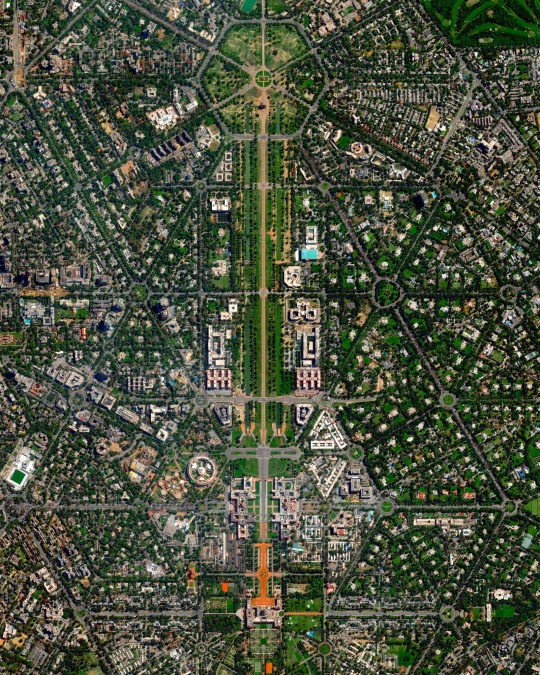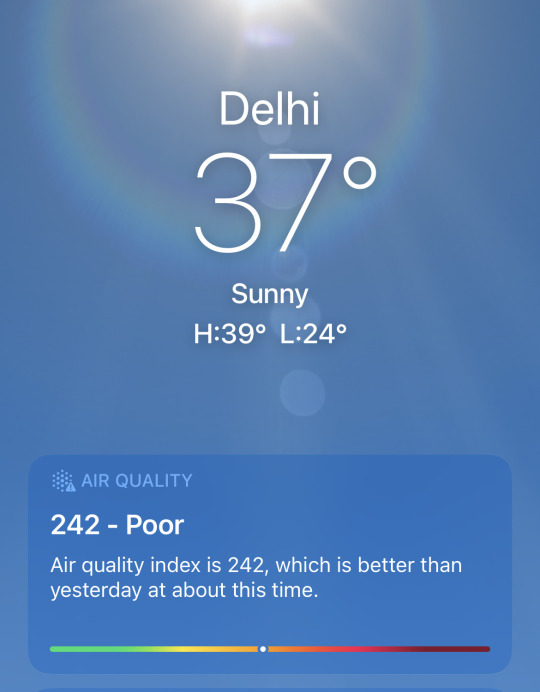#delhi air quality index
Explore tagged Tumblr posts
Text
Delhi’s air quality improves due to favourable winds
A view of India Gate covered in a layer of smog in New Delhi. File photo | Photo Credit: ANI The air quality in the national capital improved on Saturday (October 26, 2024) morning due to favourable winds even though the Air Quality Index (AQI) remained in the ‘poor’ category. Also read: Air pollution 8 times WHO’s limit in Delhi At 9 am, Delhi’s AQI was recorded at 227, down from 281 on Friday…

View On WordPress
#2024#Delhi Air Quality Index#Delhi air quality level#Delhi air quality October 26#Delhi pollution level
0 notes
Text
#Delhi pollution#air quality index#delhi pollution level schools closed#GRAP Graded Response Action Plan#India Supreme Court
1 note
·
View note
Text
Seriously critical pollution crisis for Delhi: AQI reaches deadly levels
Seriously critical pollution crisis for Delhi: AQI reaches deadly levels Delhi is witnessing the worst ever pollution crisis. The national capital has been witnessing its Air Quality Index touching alarming levels. Central Pollution Control Board (CPCB) said on Monday that it has breached 487. Adding to this, many areas, including Dwarka and Najafgarh, reported an AQI of 500 and overturned the…
#Air Quality Index#Delhi Air Pollution#Delhi AQI#Graded Response Action Plan (GRAP)#Severe Pollution in Delhi
0 notes
Text
Toxic Smog Crisis in New Delhi Declared a Medical Emergency
Toxic Smog Engulfs New Delhi, Declared a Medical Emergency The authorities in New Delhi have taken drastic measures in response to a severe smog crisis, closing schools and urging residents to stay indoors. This toxic haze, which has affected neighboring Pakistan for several weeks, has now choked India’s capital, prompting officials to label the situation a medical emergency. As of Monday, New…
#air pollution#air quality index#Atishi Marlena#health measures#medical emergency#New Delhi#Pakistán#Punjab#respiratory issues#rice stubble burning#toxic smog
0 notes
Text
Delhi govt. to start drive against burning of waste in open today
Vehicles in Delhi passing through a thick layer of smog on Tuesday afternoon. | Photo Credit: SUSHIL KUMAR VERMA Environment Minister Gopal Rai said the Delhi government will launch a campaign on Wednesday to discourage open burning of waste. The Minister made the announcement after chairing a meeting on air pollution on Tuesday when the city’s overall air quality index (AQI) showed slight…

View On WordPress
#air pollution#air quality index (AQI)#Central Pollution Control Board official bulletin#Delhi government#Environment Minister Gopal Rai#farm fires#GRAP [Graded Response Action Plan]#open burning of waste#PM2.5#Winter Action Plan
0 notes
Text

Amidst Rising Pollution Levels, Delhi Takes Swift Measures: Schools Closed, Construction Ban Implemented
0 notes
Text
212 notes
·
View notes
Text

The New Delhi metropolitan area, home to roughly 55 million people, experienced air pollution more than 50 times the safe limit on Monday. The Air Quality Index (AQI) scale in India’s capital city reached 1,600, which is quite literally off the charts — any measure above 301 is considered hazardous, and the scale used by the U.S. Environmental Protection Agency does not go higher than 500. The deadly haze lingers above the city today, and forecasts predict it will continue into the week.
28.615593°, 77.209023°
Source imagery: Maxar
110 notes
·
View notes
Text


Feeling a bit lazy lately with the change in weather and Air Quality Index above 500 here in Delhi, forcing us to stay indoors, and it's reflecting in my studies. Still trying my best to complete my targets for the day. Just reminding myself that slow progress is progress.
#academia#law#law student#law studyblr#law stuff#lawyer#studyblr#dark academia#spotify#laws#law school#law scenarios#academic validation#academic integrity#academics#my hero academia#light academia#chaotic academia#dark academic aesthetic#academic weapon#chaotic academic aesthetic#academic research#Spotify
10 notes
·
View notes
Text
According to IQAir, a Swiss-based Air Quality Index (AQI) monitoring group, pollution levels in several parts of Delhi touched the 500 mark. AQI measures the levels of particulate matter, also called PM 2.5, in the air. These tiny particles can enter the lungs and cause a host of diseases. According to WHO guidelines, air with AQI values at or below 100 is considered to be satisfactory for breathing, while readings in the 400-500 range denote that pollution levels are "severe" in an area. Delhi was the most polluted capital city in the world in 2023, according to IQAir. India was also ranked as the world's third-most polluted country after neighbours Bangladesh and Pakistan, IQAir said.
Cherylann Mollan, ‘Delhi chokes as air pollution turns 'severe'’, BBC
4 notes
·
View notes
Text

I was checking out the AQI (Air Quality Index) for places around the world and one had me do a double take.
A monitoring station at Burari Crossing, New Delhi currently has a reading of 1739.
For comparison: Istanbul's AQI is 61, Kyiv's is 57, Nairobi's is 55, Lima's is also 55, Seoul's is 50, London's is 44, NYC's is 40, and Vancouver's is 15.
An AQI of 1739 for 24 hours is the equivalent of smoking 83.61 cigarettes.
2 notes
·
View notes
Text
After season's coldest night, Delhi wakes up to another day with toxic air
New Delhi: Delhi witnessed yet another dawn with a blanket of toxic air on Wednesday, as the capital recorded an Air Quality Index (AQI) of 426 in the “severe” category, which followed the coldest night of the season in the city so far.The city’s minimum temperature dropped to 11.1 degrees Celsius Tuesday night, according to the India Meteorological Department (IMD). The drop in temperature…

View On WordPress
0 notes
Text
#air quality index#delhi air pollution#Lahore pollution#Pakistan#Bangladesh#transboundary issue#news#delhi pollution level schools closed#delhi pollution worsens#Air Quality Management
0 notes
Text
me rn
A Remus kinnie, living in Delhi (Air Quality Index is >1000), feeling exactly what he feels when the fic says 'smoked till his lungs were on fire' (without ever touching a single cigarette in my life)
#marauders#dead wizards from the 70s#Remus Lupin#remus john lupin#Moony#Desiblr#delhi pollution#The marauders era#He's just like me fr
2 notes
·
View notes
Text
Canadian wildfire smoke moving through the Great Lakes region has greatly impacted air quality for Metro Detroit residents.
According to IQAir’s air quality index, which ranks the worst and best air quality around the world, Detroit has the second worst air quality as of Wednesday morning, with New York in third place.
Delhi, India was the only city ranked higher than Detroit and New York. An Air Quality Alert was issued for all of SE Michigan.
Smoke from Canada’s wildfires has been moving into the United States since last month. The most recent fires near Quebec have been burning for at least several days.
The U.S. Environmental Protection Agency said hazy skies, reduced visibility and the odor of burning wood are likely, and that the smoke will linger for a few days in northern states.
Exposure to elevated fine particle pollution levels can affect the lungs and heart.
It’s a good time to put off that yard work and outdoor exercise. If you go out, consider wearing an N95 mask to reduce your exposure to pollutants.
Stay inside, keeping your doors, windows and fireplaces shut. It’s recommended that you run the air conditioning on a recirculation setting.
20 notes
·
View notes
Text
i feel bad for people in new york because of the air quality but it reminded that the air quality index in delhi (capital of india) is casually a 242 and this is not unusual and people just deal w it ??

#my best friend lives in delhi and she’s fine with it she’s never said a word about the AQI#this summer she was like ‘oh it’s actully better than last summer’ like the climate conditions in general 😭#they’re just built different i guess lmao#arshia talks
19 notes
·
View notes